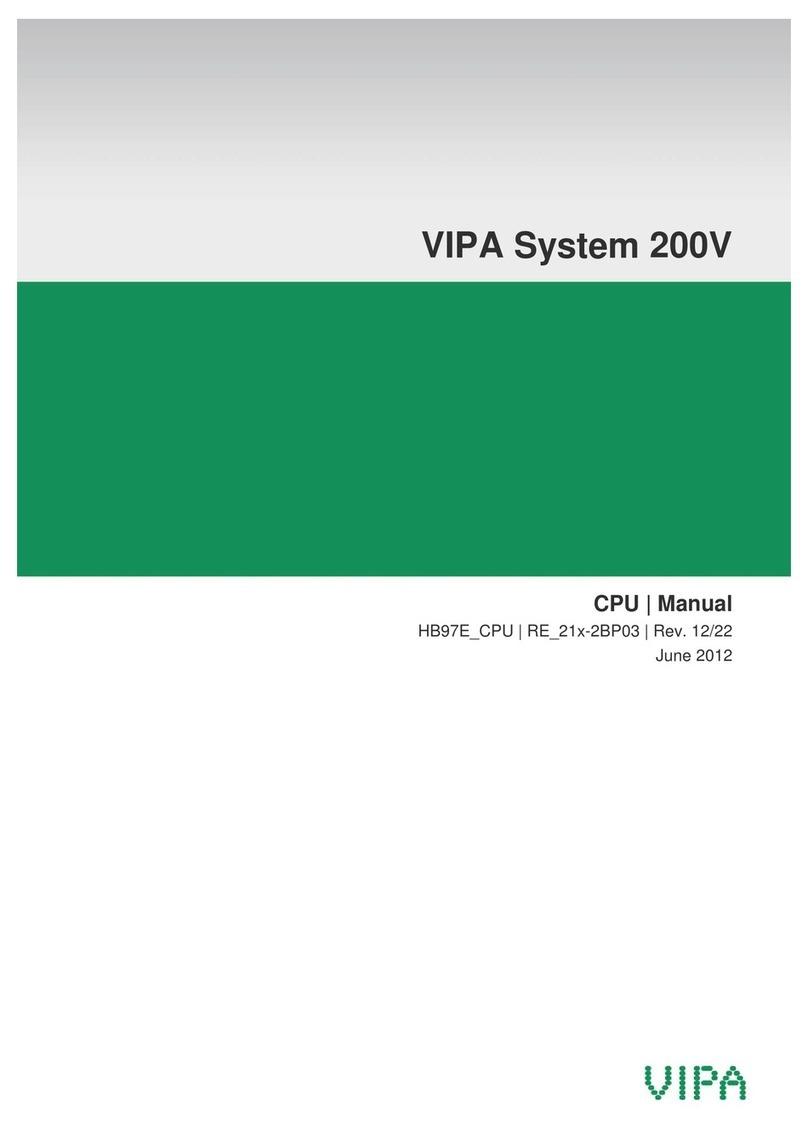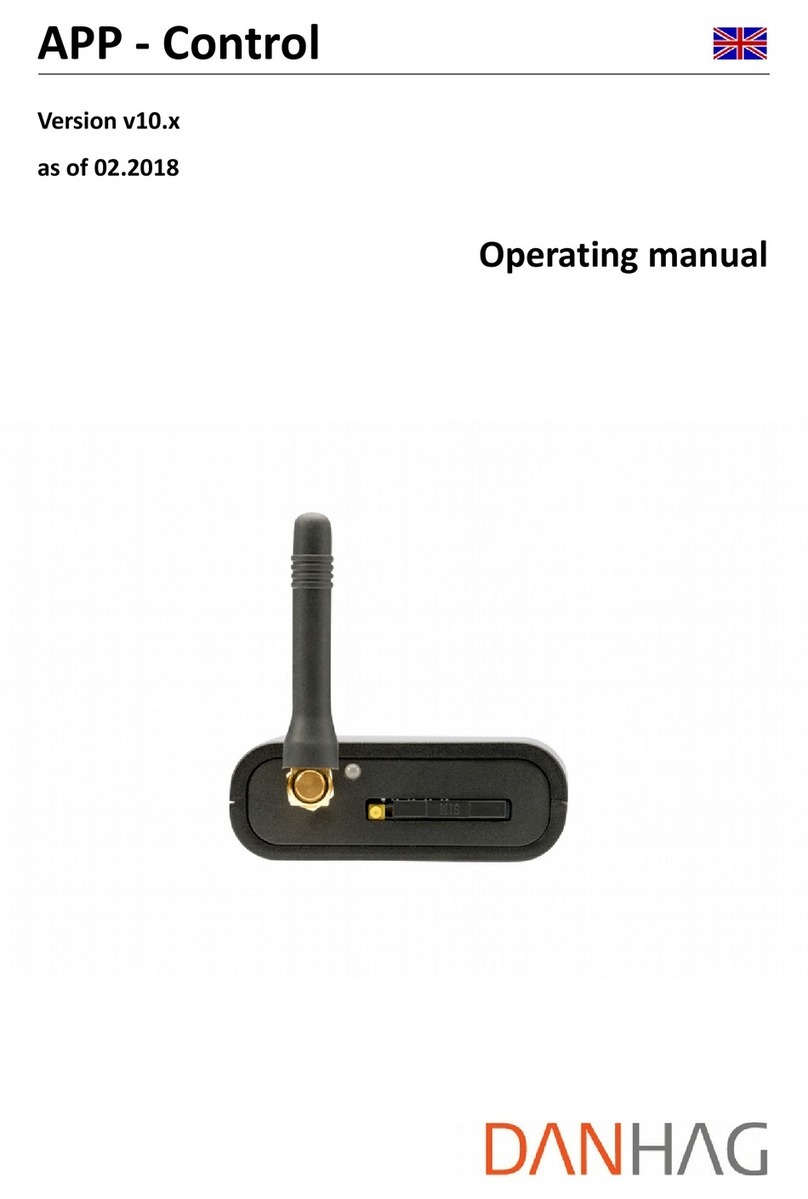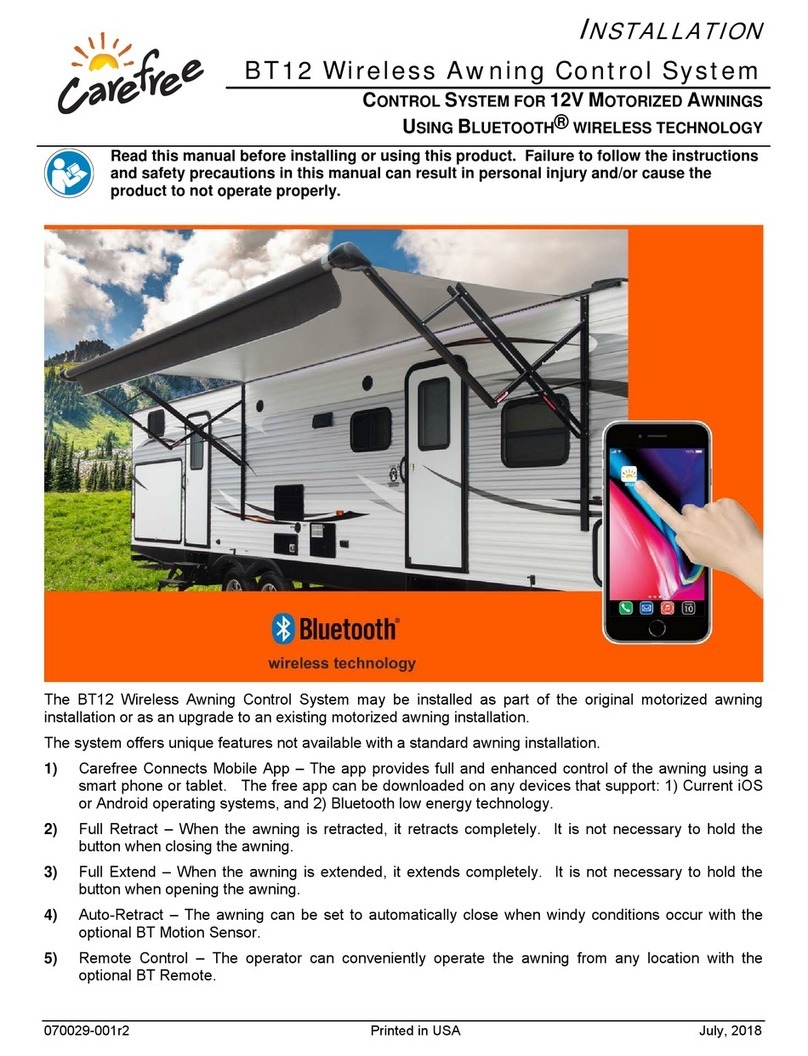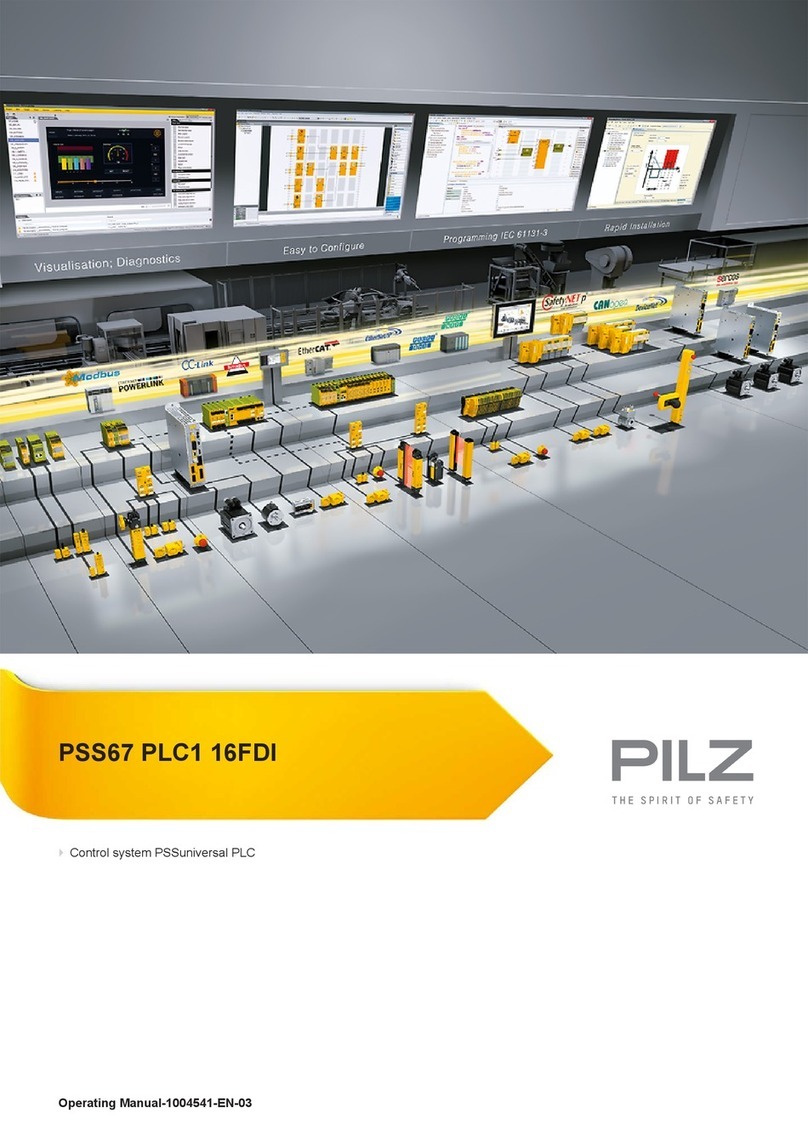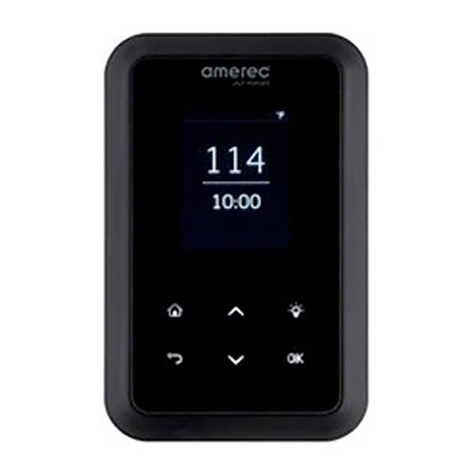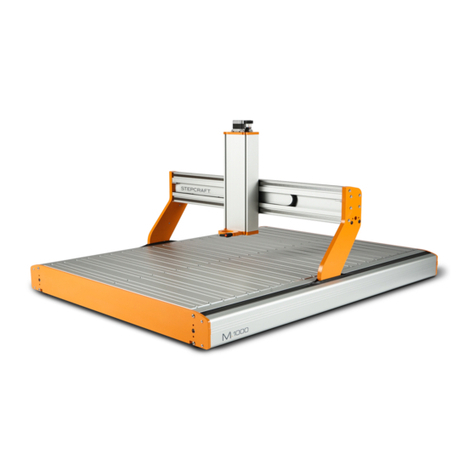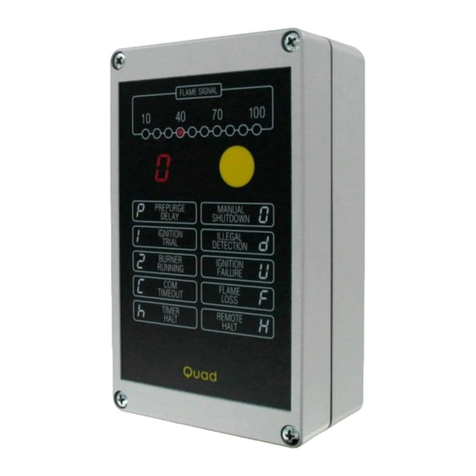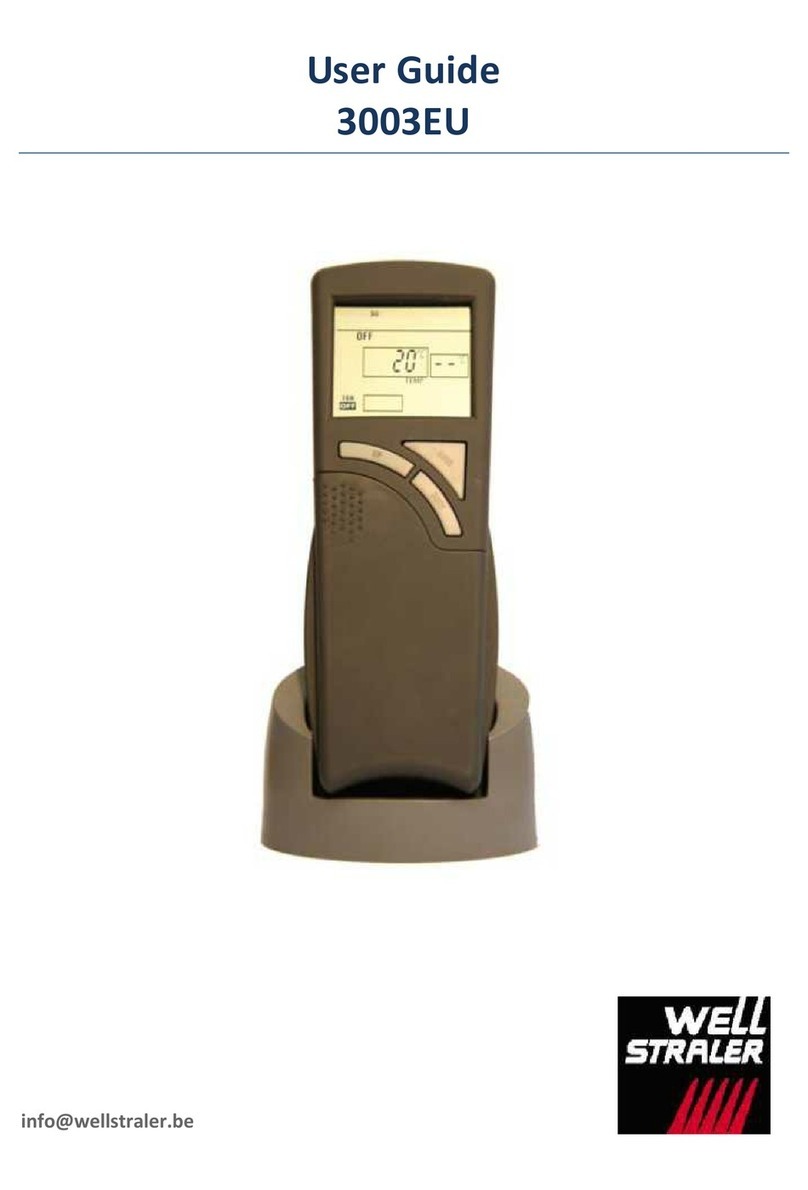BERGES Electronic ACP 6000 User manual

Operating Instructions
Crane Control Option ACP 6000
(as from software version 2.7)
ACP
SLV

Functional Description
Operating Instructions 06.10.03
Crane Control Option ACP 6000 KRANOPTI
1
1 Description of the Crane Control Option ACP 6000
(as from software version 2.7)
The BERGES crane control option has been developed specifically for crane and trolley
travel applications.
The extensive crane control function includes working limit settings for the maximum and
minimum speeds as well as switching inputs for speed limitation in the limit switch or safety
limit switch area.
Two inverters are required for complete 2-axis control (crane and trolley travel), one for
each axis.
The parameter
81-PRGNO
(selection of special programs) permits the control terminals of
the ACP inverters to be switched from the standard function to the BERGES crane control
option. This is done by entering the number 430 in the parameter
81-PRGNO
.
The following types of contact are used for controlling the individual control inputs:
• FWD = NO contact
• REV = NO contact
• R/J = NO contact
• PS1 = NC contact
• PS2 = NC contact
• PS3 = NC contact
• ART = NC contact
1.1 Safety Measures
1) The frequency converter-operated lifting motor is monitored as far as possible by the fre-
quency converter. To prevent damage in the event of a fault occurring, an additional
safety switch is required for the brake control.
EXAMPLE:
The maximum frequency (parameter 23) has been programmed from 50 Hz to 100 Hz
or higher and the motor loses the torque in the weakening of the field; due to this, the
load can pass through. The damage occurring as a result can be prevented by additional
monitoring.
2) The network downtime of the frequency converter must be maintained until the terminal
“+24V” has attained 0 volt or the display of the converter has turned dark. The Inverter
protects itself from switching on frequently and turning off and is then operational again
after approx. 10 minutes.
1.2 Functional Description
FWD = Selection of direction of rotation clockwise.
Save speed.
Parameter selection: 31-FMIN
When this input is selected for the first time, the drive accelerates to the target frequency
entered in the parameter
31-FMIN
. Operation is continued with the just reached rotational
frequency during the acceleration and deceleration phases by activation of this input.
Only the limit switch speeds entered in parameters
34-F3
(inputs PS1 and PS2) and
33-F2
(input PS3) may lie below this speed in travelling operation. Simultaneous operation of the
control inputs FWD and REV means stop.
REV = Selection of direction of rotation counter-clockwise.
Save speed.
Parameter selection: 31-FMIN
HINT!

06.10.03 Operating Instructions
KRANOPTI Crane Control Option ACP 6000 2
Functional Description
When this input is selected for the first time, the drive accelerates to the target frequency
entered in the parameter
31-FMIN
. Operation is continued with the just reached rotational
frequency during the acceleration and deceleration phases by activation of this input.
Only the limit switch speeds entered in parameters
34-F3
(inputs PS1 and PS2) and
33-F2
(input PS3) may lie below this speed in travelling operation. Simultaneous operation of the
control inputs FWD and REV means stop.
R/J = Acceleration.
Parameter selection: 32-FMAX
The drive is accelerated from the just reached frequency if this input is selected together
with an FWD or REV input. If only the R/J input is activated, the drive is decelerated to zero
speed using the entered deceleration time function.
The value defined in the parameter
32-FMAX
can be approached directly as the maximum
frequency.
This maximum frequency is overwritten if the inputs PS1 (parameter
34-F3
) or PS2 (param-
eter
34-F3
) or PS3 (parameter
33-F2
) or ART (parameter
35-F4
) are not activated.
The frequency entry in the parameter
32-FMAX
is also the upper limit of the input range of
parameters 31 to 36.
PS1 = Limit switch S1 (forward).
Parameter selection: 34-F3
The input PS1 is de-energized if the crane travels over this limit switch with the direction of
rotation “forward”. The drive is decelerated to the frequency entered here by way of the de-
celeration ramp if the instantaneous frequency of the drive is greater than that defined in
parameter
34-F3
.
This limit switch does not produce any frequency or functional change if the instantaneous
frequency is less than that in parameter
34-F3
. If the crane is in the area between limit
switches S1 and S3/S4 and the direction of rotation “reverse” is selected, then the frequen-
cy limit is deactivated for this direction of rotation.
PS2 = Limit switch S2 (back).
Parameter selection: 34-F3
The input PS2 is de-energized if the crane travels over this limit switch with the direction of
rotation “forward”. The drive is decelerated to the frequency entered here by way of the de-
celeration ramp if the instantaneous frequency of the drive is greater than that defined in
parameter
34-F3
.
This limit switch does not produce any frequency or functional change if the instantaneous
frequency is less than that in parameter
34-F3
. If the crane is in the area between limit
switches S1 and S3/S4 and the direction of rotation “forward” is selected, then the frequen-
cy limit is deactivated for this direction of rotation.
PS3 = Limit switches S3 and S4 (safety range).
Parameter selection: 33-F2
The input PS3 is de-energized if the crane travels over this limit switch, irrespective of the
direction of rotation. The drive is decelerated to the frequency entered here by way of the
deceleration ramp if the instantaneous frequency is greater than that defined in parameter
33-F2
. This limit switch does not produce any frequency or functional change if the instan-
taneous frequency is less than that defined in parameter
34-F3
. This frequency limit is valid
for both directions of rotation. In practice, the limit switches at the craneway ends are con-
nected jointly to the input PS3 by means of a wired-AND connection.
ART = Switchover between cab (radio) - floor control (switch S5).
Parameter selection: 35-F4

Functional Description
Operating Instructions 06.10.03
Crane Control Option ACP 6000 KRANOPTI
3
When this input is in de-energized condition, the frequency defined in parameter
32-FMAX
is reduced to the value entered in parameter
35-F4
. The drive is decelerated to this frequen-
cy by way of the deceleration ramp if the instantaneous frequency is greater than that de-
fined in parameter
35-F4
. The frequency limits defined in the parameters 31 to 35 are lim-
ited by the value entered here if the setpoint limit
35-F4
is active.
MOL = Motor protective relay input.
Overtemperature protection, braking resistor.
If a motor protective relay or external braking resistor is used, the MOL input must be con-
nected via the NC contact of the motor protective relay or the temperature clixon of the ex-
ternal braking resistor. Any interruption of the circuit results in the inverter being disabled
immediately and the drive then coasts to a stop.
The error F07 is shown on the display of the inverter. An error reset can be carried out by
switching off the mains power and then switching back on again or by pressing the STOP
key on the inverter or by connecting the error reset input RST at the inverter.
A wire jumper is fitted between MOL and +24 V at the works.
ST1 = Holding brake operation.
Parameter selection: 72-ST1 (function 3, motor runs in counter-clockwise or
clockwise direction).
This parameter activates the open collector output ST1; the function 3 should be entered
here (motor runs in counter-clockwise or clockwise direction).
The control output ST1 is connected after a start command in counter-clockwise or clock-
wise direction. A relay (maximum coil current 50 mA) connected here is then energized and
a mechanical holding brake can be operated by way of the relay contacts.
In the event of a fault or drive standstill, the transistor disables the output ST1 and the con-
nected relay drops out; the holding brake is then activated.
Acceleration and deceleration times
The acceleration and deceleration times are entered in the parameters
42-ACC1
and
43-
DEC1
. In addition, it is recommended to select the function 3 (S-shaped acceleration/ de-
celeration ramp) in the parameter
41-RSEL
(ramp selector).
Parameter Description Works setting
21-MODE The various combinationsof the active control sourcecan be
selected with this parameter. 14
31-FMIN Defines the minimum speed. 10 Hz
32-FMAX Defines the maximum speed. 50 Hz
33-F2 Defines the travel speed in the safety range. 3 Hz
34-F3 Defines the travel speed in the limit switch range. 5 Hz
35-F4 This parameter allows programming of a second maximum
travel speed which can be activated via the control terminal
ART.
45 Hz
42-ACC1 Acceleration time in seconds referred to the maximum travel
speed (
32-FMAX
). 5 s
43-DEC1 Deceleration time in seconds referred to the maximum travel
speed (
32-FMAX
). 5 s
72-STR1 This parameter defines the function of the open collector out-
put on the control board. 3
75-STR This parameter defines the function of the auxiliary relay out-
put on the control board. 1
81-PRGNO This parameter activates the BERGES crane control option. 430

06.10.03 Operating Instructions
KRANOPTI Crane Control Option ACP 6000 4
Switching Matrix
1.3 Switching Matrix
NOTES:
0 = inactive
1 = active
X = not significant
FMAX, F2, F3, F4 = inverter parameters
Input terminals Function
FWD REV R/J ART PS1 PS2 PS3
00X Stop
11X Stop
1 0 0 Start forward/maintain speed
1 0 1 Acceleration forward
0 1 0 Start reverse/maintain speed
0 1 1 Acceleration reverse
1 0 1 1 X 1 1 Speed limit 1 forward (FMAX)
1 0 X 0 X 1 1 Speed limit 2 forward (F4)
1 0 X X X 0 1 Limit switch speed forward S2 (F3)
1 0 X X X X 0 Safety limit switches S31 and S32 (F2)
0 1 X 1 1 X 1 Speed limit 1 reverse (FMAX)
0 1 X 0 1 X 1 Speed limit 2 reverse (F4)
0 1 X X 0 X 1 Limit switch speed reverse S2 (F3)
0 1 X X X X 0 Safety limit switches S31 and S32 (F2)

Connection Diagram
Operating Instructions 06.10.03
Crane Control Option ACP 6000 KRANOPTI
5
1.4 Connection Diagram
NOTES:
1) Maximum cable length 5 m (screened). Decoupling relays must be used for longer ca-
bles.
2) Maximum cable length between inverter and braking chopper 2 m (twisted).
3) Mains filter option.
4) Output reactor option.
5) Maximum coil current 50 mA (24 V DC). Connect coil with free-wheeling diode.


BERGES electronic GmbH
Industriestraße 13 • D–51709 Marienheide-Rodt
Postfach 1140 • D–51703 Marienheide
Tel. (0 22 64) 17-0 • Fax (0 22 64) 1 71 26
http://www.berges.de • e-mail: Info_BEL@berges.de
Table of contents
Popular Control System manuals by other brands

Huawei
Huawei IDS1000 user manual
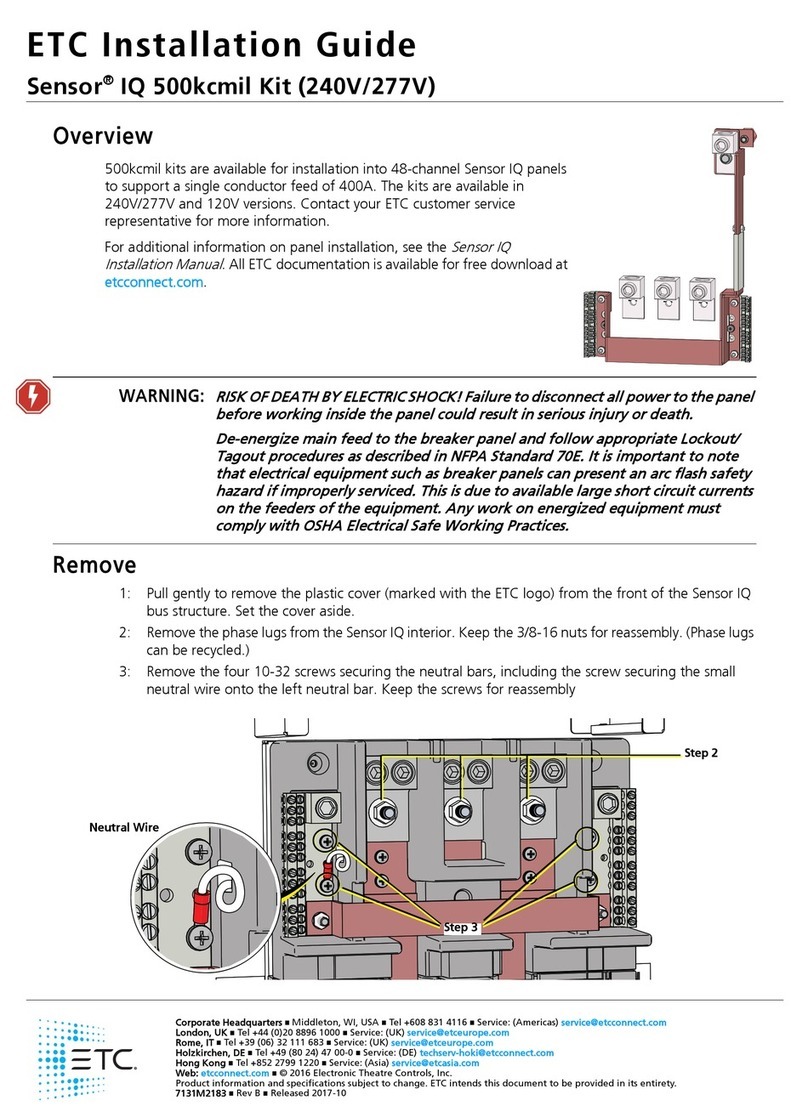
ETC
ETC Sensor IQ 500kcmil Kit installation guide
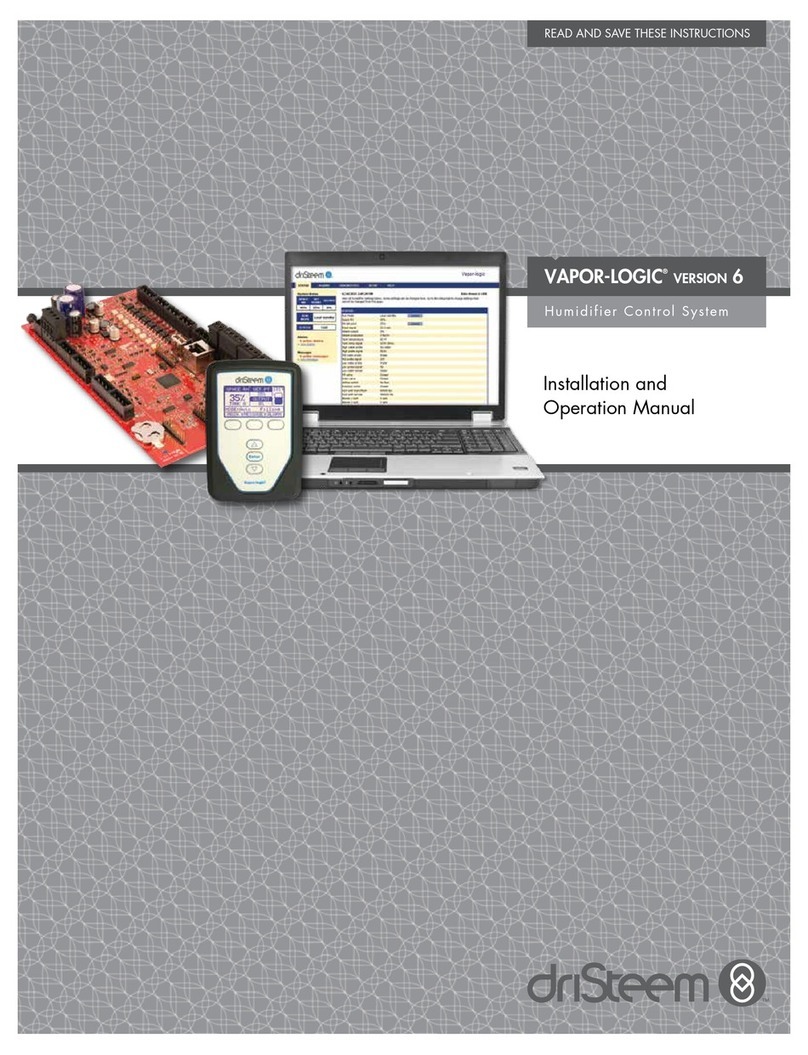
DriSteem
DriSteem Vapor-Logic Installation and operation manual

Autogard
Autogard AG/500 operating instructions

Extron electronics
Extron electronics TouchLink TLP Pro 520M user guide
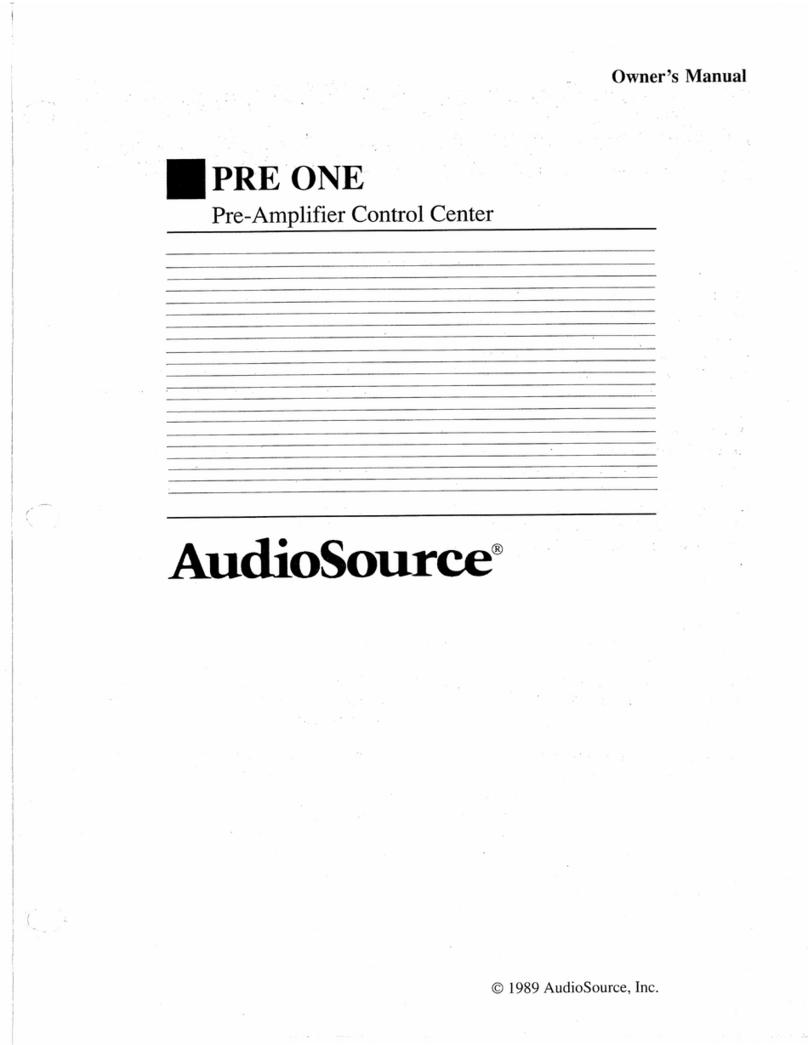
AudioSource
AudioSource Pre One owner's manual
